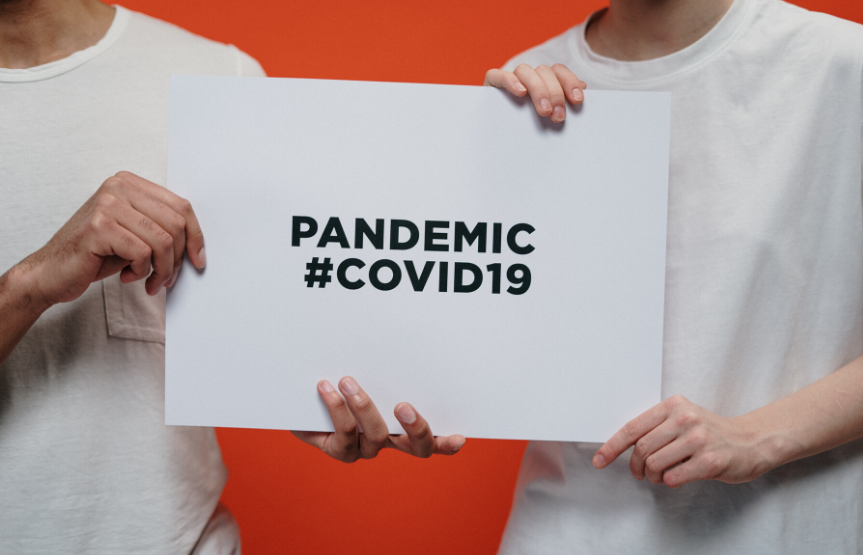COVID-19: The new reality

Coronavirus in general is any of a family (Coronaviridae) of single-stranded RNA viruses that have a lipid envelope studded with club-shaped projections, infect birds and many mammals including humans, and include the causative agents of MERS, SARS, and COVID-19. They cause mild to severe or even fatal diseases in the human body. These diseases are associated with respiratory infections. The natural reservoir for coronaviruses is the animal hosts. New strains emerge from this reservoir, infect an 'intermediate' host, and from there infect people. The viruses may then be capable of being transmitted from one person to another.
The infection from COVID-19 was first detected in December 2019 in the Yuhan region of China and is a new strain of the corona that had not previously been isolated in humans. Then it turned into an epidemic and after into a pandemic. This is a new pathogen that knowledge in this species is still limited, but scientists are studying and researching it that. This virus began to spread from person to person easily and steadily in the community. Where the dispersal in the community means the occurrence of confirmed cases which the source of transmission is not known.
When a person is a confirmed case of infection from COVID-19 it is possible to transmit the virus to other people. If a person comes in contact with a confirmed case, they should stay at home for 14 days after the last contact and monitor their health regularly. If you experience symptoms such as fever, cough, difficulty breathing, you should contact your doctor immediately. The virus is transmitted through droplets from the respiratory tract (e.g. coughing, sneezing, runny nose) as well as from contact with infected surfaces and then touching the mouth, nose or eyes with the hands. While transmission from an infected person without symptoms is still unclear, it is likely through contact with respiratory secretions and then contact with other people (e.g. handshaking) can be transmitted.
Transmission through food or packages that have been circulating for days or weeks at ambient temperature or in refrigeration or freezing conditions is considered quite difficult due to the short duration of survival of the virus on the surfaces. Some think that improving the weather will reduce the spread of the virus as is often the case with seasonal flu, but it is not yet confirmed.
According to currently available data, the virus can cause mild symptoms such as: fever, cough, shortness of breath, difficulty breathing, myalgia, fatigue. More serious cases develop severe pneumonia, acute respiratory distress syndrome, sepsis and septic shock that can lead to the death of the patient. People with existing chronic conditions seem to be more vulnerable to severe illness.
The precautionary measures we must take to protect ourselves are :
Avoid potential exposure.
- Practice good hygiene measures and safe food practices.
- Avoid direct contact with animals (live or dead) and their environment.
- Do not touch surfaces that may be contaminated with droplets.
- Keep distance from people who are obviously sick.
- Maintain good personal hygiene.
- Wash your hands frequently with soap and water.
- Carry hand sanitiser for use when soap and water are not readily available.
- Some authorities are advising hand sanitisers containing 60-85% alcohol.
- Avoid touching your face.
- Ensure food, including eggs, is thoroughly cooked.
- Do not travel if you are sick.
- Avoid sharing personal items with others. For instance, don't share utensils and drinking glasses at mealtimes.
At the laboratory test for the COVID-19 includes:
- patients with severe acute respiratory infection who need treatment or are being treated
- health care workers who develop an acute respiratory infection
- elderly (>70) or people with severe chronic underlying diseases who develop acute respiratory infection with fever and cough or breathlessness. This test can be negative in the early stages of the disease, while in the symptomatic phase and as the disease progresses, it can be positive.
There is no specific treatment for the disease. Treatment is symptomatic with the aim of relieving the symptoms. (e.g. fever, difficulty breathing). The international literature on the use of antivirals against the new virus is very limited and comes almost exclusively from China. In vitro and in vivo studies suggest possible therapeutic activity of certain drugs against coronoids, similar to the new coronary SARS-CoV-2.According to the 6th edition of the Guidelines of the National Health Committee of China, interferon α (IFN-α) in the form of inhalations, lopinavir / ritonavir , chloroquine phosphate , ribavirin and arbidol (broad-spectrum antiviral).
Finally , there is currently no vaccine available for COVID-19, so early diagnosis and prevention of the disease is important. Several pharmaceutical companies are working to make a vaccine, but it looks like it will take some time to complete.

References
- https://www.merriam-webster.com/dictionary/coronavirus
- https://wizzair.com/el-gr/coronavirus-information
- https://en.wikipedia.org/wiki/Coronavirus
- https://eody.gov.gr/erotiseis-kai-apantiseis-gia-to-neo-koronoio-covid-19/?print=print
- https://wizzair.com/static/images/default-source/default-library/wizz-corona-infographic-2020-03-06_final_4f0a261a.png
